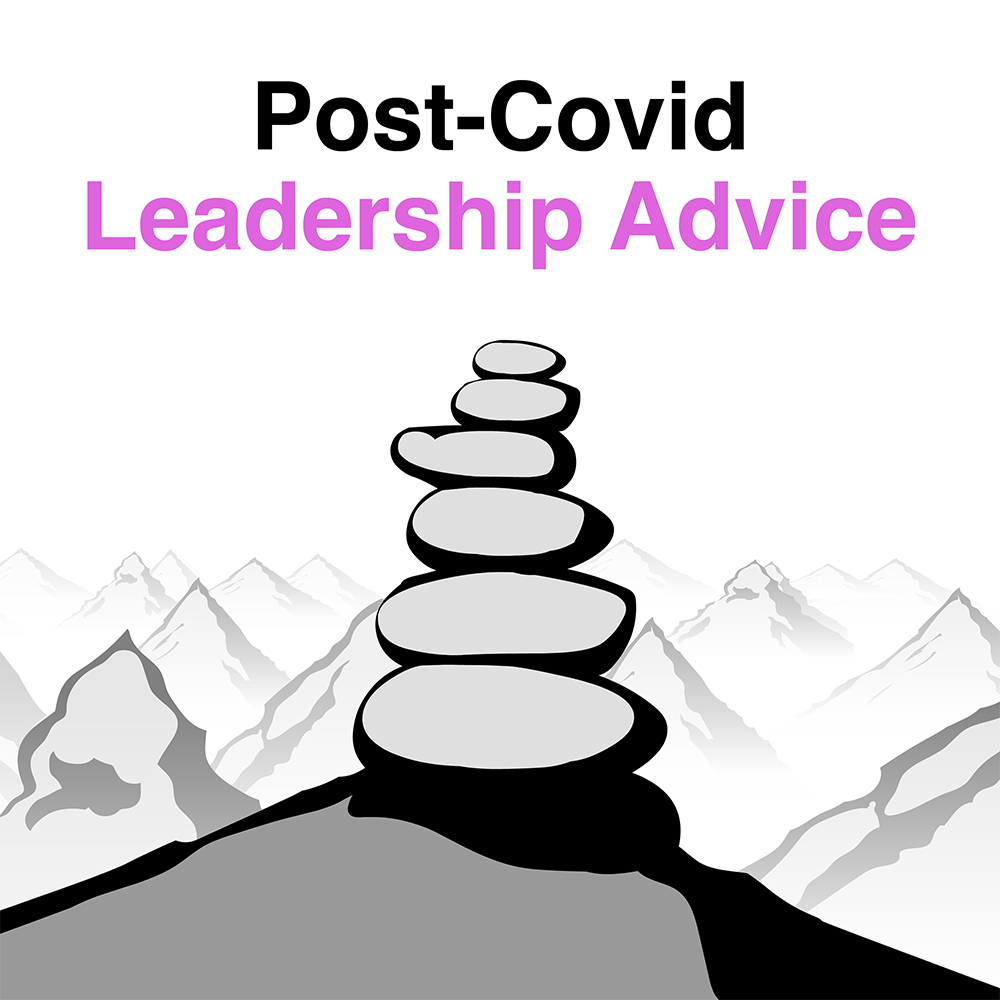Post-covid Leadership
Fiona Passantino, late May 2023
Leaders today need to be visible. Not just physically present for their teams but digitally, producing posts and thought leadership content for internal and external audiences. When words are needed, ChatGPT can help. Refine for accuracy, voice and coherence, it’s a tool that can help raise your pCoaching increases our job satisfaction and productivity, improve our efficiency and personal skills and make us better leaders. With more employees demanding professional development, organizations are introducing in-house coaching teams, which are more affordable, sustainable and rewarding. What an in-house coaching team needs and five steps for setting it up.
Manager to coach
With the rapid pace of business transformation, disruption and high attrition, companies are moving away from command-and-control managerial practices and towards a practice of support and guidance.
Employees are encouraged to adapt to constantly changing environments and unleash their energy, innovation, and creativity[i]. In other words, managers are becoming coaches.
Coaching is about promoting emotional intelligence, self-awareness, compassion and empathy. It’s not about having the answers, but careful listening and asking the questions that spark insight in the other person. This can be difficult for many managers, because they’re not in their familiar role of asserting their authority[ii].

The ROI of coaching
Coaching increases our job satisfaction and productivity, improve our efficiency and personal skills and make us better leaders. With effective coaching programs, employers prevent churn by 77%[iii].
Of employees coached, 70% report improved performance and 61% are happier with their leaders. 69% of all managers believe it is important for companies to provide coaching to improve their leadership skills, but only 23% of them actually receive it.[iv]
Coaching used to be reserved for top-level executives and high-potential employees; but today, with 44% of Millennial workers unwilling to stay with their company more than two years, developing all levels of the organization is becoming a priority. If Millennial workers are happy with the coaching and development program, they are 30% are more likely to stay for five years or more[v].
Keeping it in the house
Much of our professional coaching takes place externally. Teams are dispatched to expensive off-site workshops, or bring professional executive coaches in who don’t understand the business. The teams return from their sessions and go straight back to the status quo, because the externals fail to connect what they have learned to the specific organizational context.
In-house coaching that is personalized and contextual is the answer. More affordable and sustainable, an in-house coach understands the business and the political landscape.
Some companies have already tried it; in 2020, AT&T reeducated 100,000 employees[vi]. Google’s Career Guru in-house coaching program is extremely successful, receiving an average employee satisfaction rating of 4.8 out of 5[vii].
Setting it up
Developing an in-house coaching program requires some investment of time and money, and needs to be planned carefully. Here are a few easy steps to take to get started.
STEP 1: Targets and Goals
Before any coaching can take place, it’s important to first determine the goals and objectives you want to achieve. What are the areas where your employees need improvement? Do you want to focus on leadership skills or improve internal communication? The first step is examining the data collected by years of surveys and honing in on the pain points.

A good external coach can be brought in to change manage and ask the right questions. What are the goals, and what does a successful coaching program look like? Which groups are targeted first, second and third? Where are the pain points in the organization, and which groups are ripe for growth? Are new joiners chronically floundering, is upper management tone-deaf and non-responsive? And finally, what is the available budget?
STEP 2: Identify the internal coaches
The success of the program will depend on the quality of the people you choose. Depending on the size and budget of the organization, a pool of internal coaches can consist of 1% of the current workforce. Individuals from a variety of business units and teams, levels and functions can be identified as good potential coaches; then find the ones who are particularly skilled communicators, the ones who seem to know everyone, the ones who are natural facilitators and trainers.
One by one, these people are identified and approached. At the same time, putting out a company-wide call to attract people for this new function will add a highly motivated stream to the pool of candidates. Candidates would drop their current roles and tasks and take up the role of internal coach full-time while their current jobs would then be filled by others. They would therefore have to be excited about the prospect.
STEP 3: Disappear and Train
Once screened and onboarded, this new coaching team needs to disappear for four to six weeks to receive intensive training by an external agency. They can go for an ICF certification program or have the training in-house.
Coaching specialists provide them with the tools and resources they need to act as a Sales, Onboarding, Leadership or Communication coach, fully able to conduct group sessions or on-on-one in a hybrid environment.
STEP 4: Implement and Communicate
Implementation of any new program takes time and intention. The new team would work together to set up their own internal structure. Who is the “coach-of-coaches” who reports back to senior management? How often do they meet, and how is the need divided? Does each coach take on a topic (sales, communication, development) or a target (new joiners, female employees, call center employees)? Who excels in group work, and who does better one-to-one?
Next, the roll-out and awareness campaign; for the program to be effective, it’s essential to have people to coach. Employees need to be made aware of the new program, how it works and what the benefits and investment would be. Communicate the value of coaching, and provide employees with opportunities to ask questions and provide feedback in a string of information sessions.
All levels of the organization should have access to the program. The particular aspects they will work on will largely depend on the priorates set by their managers and peers, and of course by themselves.
STEP 5: Adapt and Evolve
Once underway, the program will naturally iterate and improve over the first year or two. Evaluate the effectiveness of the program regularly. Collect feedback from both the coach and the employees to refine and adapt the approach.
A culture of coaching
In-house coaching programs help develop talent, improve employee engagement and retention. But they do something more; they put out the signal loud and clear that the organizational culture is one of investment in people and belief in continuous learning.
As the business environment evolves and becomes more complex, internal coaching programs help companies stay sharp, navigate change and build resilience over time.

No eyeballs to read or watch? There’s a podcast for you!
- Listen to the APPLE PODCAST
- Listen to the SPOTIFY PODCAST
Search for “Post-Covid Leadership Advice” everywhere you like to listen to podcasts. A few times a month, Fiona will dive into the nitty-gritty of employee engagement, company culture and best practices with communication. Subscribe so you never miss an episode. Rate, review and share.

About Fiona Passantino
Fiona is a Culture, Engagement and Communications expert, helping teams and leaders engage, inspire and connect their teams through her company Executive Storylines. She is a speaker, facilitator, trainer, executive coach, podcaster blogger, YouTuber and the author of the Comic Books for Executives series. She also has a weekly radio show on Den Haag 92 FM on the Future of Work.
[i] Ibarra, Scoular (2019) “The Leader as Coach: How to unleash innovation, energy, and commitment”. Harvard Business Review. Accessed April 12, 2023. https://hbr.org/2019/11/the-leader-as-coach
[ii] Ibarra, Scoular (2019) “The Leader as Coach: How to unleash innovation, energy, and commitment”. Harvard Business Review. Accessed April 12, 2023. https://hbr.org/2019/11/the-leader-as-coach
[iii] Colvin (2023) “Mentoring may be on the rise, ATD says”. HR Dive. Accessed April 12, 2023. https://www.hrdive.com/news/2023-mentoring-programs/639717/
[iv] Livingstone (2021) “Eight Best Practices for Building an Internal Coaching Program” Forbes.com. Accessed April 12, 2023. https://www.forbes.com/sites/forbescoachescouncil/2021/07/26/eight-best-practices-for-building-an-internal-coaching-program/?sh=7f1335d948ba
[v] Deloitte (2016) “The Millennial Majority is Transforming Your Culture” Deloitte. Accessed April 12, 2023. https://www2.deloitte.com/content/dam/Deloitte/global/Documents/About-Deloitte/gx-millenial-survey-2016-exec-summary.pdf
[vi] Caminiti (2018) “AT&T’s $1 billion gambit: Retraining nearly half its workforce for jobs of the future” cnbc.com. Accessed April 13, 2023. https://www.cnbc.com/2018/03/13/atts-1-billion-gambit-retraining-nearly-half-its-workforce.html
[vii] McLaren (2019) “Google’s Former Career Coach Recommends This Trick to Boost Employee Engagement” LinkedIn Talent Blog, Accessed on April 13, 2023. https://www.linkedin.com/business/talent/blog/talent-engagement/google-career-coaching-boost-employee-engagement

Just want to say your article is as astonishing. The clearness in your publish is simply great and that i can suppose you are a professional in this subject. Well along with your permission let me to grab your RSS feed to keep updated with imminent post. Thank you one million and please keep up the gratifying work.
nice, thanks!
Thanks a bunch for sharing this with all of us you actually know what you are talking about! Bookmarked. Please also visit my website =). We could have a link exchange contract between us!
You’re welcome!
I was very pleased to find this web-site.I wanted to thanks for your time for this wonderful read!! I definitely enjoying every little bit of it and I have you bookmarked to check out new stuff you blog post.